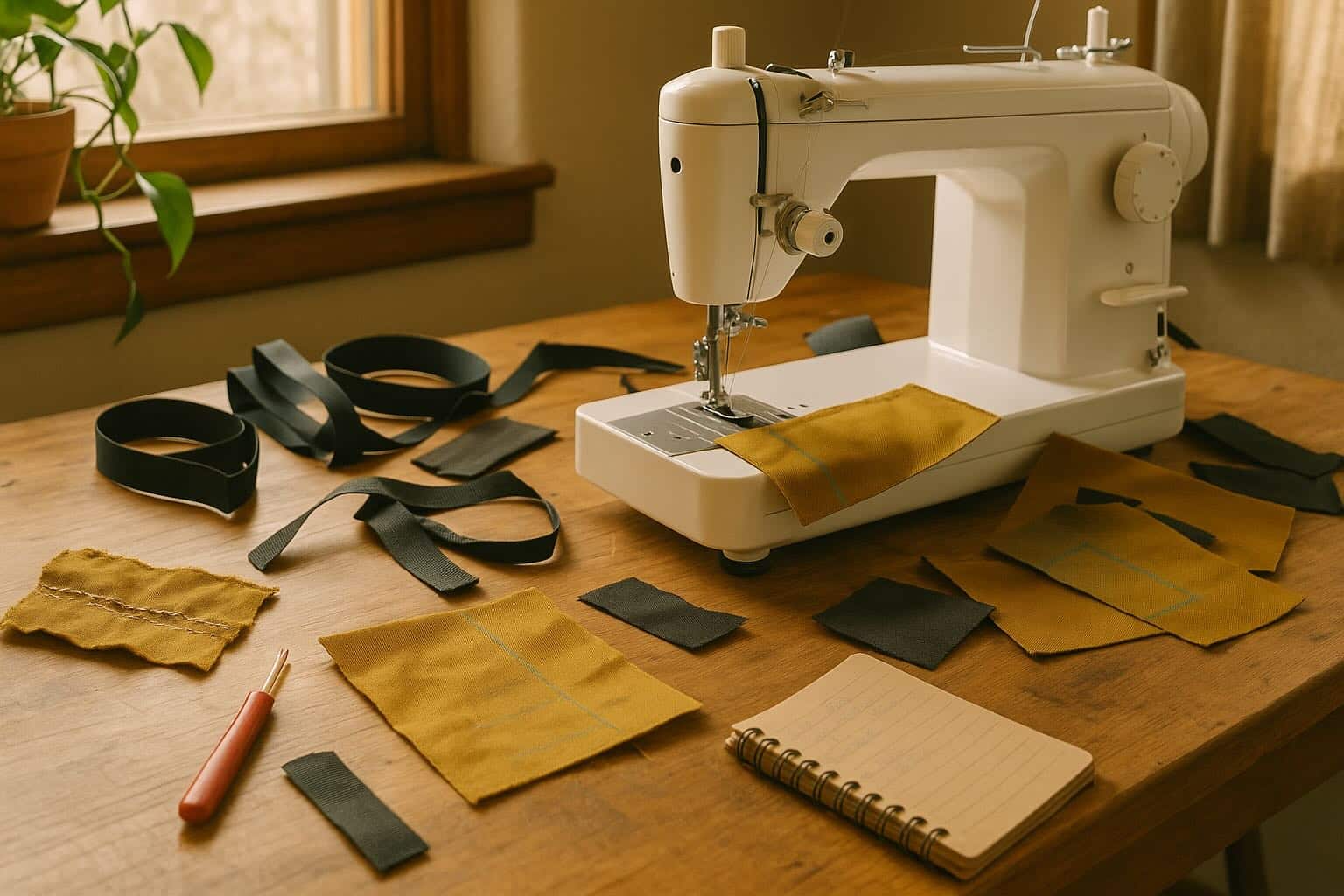Common Sewing Mistakes: Everyone Starts Somewhere (And Messes Up)
Sewing your own gear is a wildly rewarding hobby — but it’s not always smooth sailing. Whether you’re following a pattern or making something from scratch, little mistakes can quickly add up to crooked seams, wasted fabric, or a project you don’t want to show off.
The good news? Most of these mistakes are easy to avoid once you know what to watch for. Here are 10 of the most common sewing mistakes and slip-ups I’ve seen (and made myself), along with tips to help you skip the frustration.
1. Starting Without a Plan
If you’ve ever started cutting before double-checking your layout… you’re not alone.
Jumping in without a sketch, mockup, or measurements often leads to wasted time (and materials). Even if you’re working from a kit, it helps to pause and plan. Visualizing your final project, tracing your pieces, and walking through the steps in your head will save you from backtracking later.
Try this: read the full build instructions before touching your scissors. You’ll spot trouble spots ahead of time.
Related: Plan It Right – How to Sketch and Measure Your MYOG Projects
2. Using the Wrong Needle or Thread
Nylon webbing? Upholstery fabric? These materials don’t play well with a universal needle and all-purpose thread.
Choosing the wrong combo can result in skipped stitches, big balls of thread, broken threads, or shredded fabric. Heavy-duty projects need the right tools.
Look up your material type and match it with the correct needle (heavy-duty, denim, leather) and thread (polyester, bonded nylon, etc.).
3. Ignoring Seam Allowances
If you stitch right along the edge of your fabric without adding seam allowance, your seams will pop faster than you’d expect.
On the flip side, adding too much and trimming it later makes your pattern harder to follow. Seam allowances help maintain shape and strength — they’re not just a formality.
Mark seam lines with chalk or use your presser foot as a guide.
Pro Tip: For tough or dark fabrics like Cordura, a colored pencil can work great for marking seam lines if chalk doesn’t show up well.
4. Not Changing Your Needle Often Enough
Dull needles = skipped stitches, fraying, or bent tips that jam your machine.
Change your needle after every major project, especially when sewing tough materials like Cordura or X-Pac. Your machine will thank you.
5. Rushing Through Layout and Cutting
If you cut before checking your measurements, you might end up with a trapezoid instead of a rectangle.
Always measure twice. Use weights or clips to keep your fabric from shifting. And unfold your fabric fully before cutting — trust me, I’ve accidentally doubled up and wasted material. (Ask me how I know.)

Pro Tip: Number your panels as you cut them out to help you remember their order of assembly.
6. Sewing Too Fast — Especially on Corners or Layers
Zooming through a project might feel satisfying, but you’ll pay for it when your corners stretch, your webbing shifts, or your needle snaps.
Slow down on tricky sections. Guide by hand where it counts.
7. Not Backstitching or Reinforcing Stress Points
If your straps pop off mid-hike, chances are the stitch wasn’t secured.
Backstitch the beginning and end of every seam. Use a box-X or bar tack on webbing and strap joints. Reinforcement = reliability.
8. Forgetting to Check Thread Tension
Loose loops or puckering seams? Probably a tension issue.
Always test your stitch settings on a scrap of your project fabric before starting. Make adjustments early.
9. Not Testing Stitch Settings on Scrap Fabric
New fabric, new interfacing, new machine setting? That’s a recipe for surprises.
Pro Tip: Order an extra 1/8th or 1/4th yard of any new material so you have a bit of scrap to practice on before diving into your project. It’s a small investment that saves a lot of headaches.
Bonus: Sewing kits are a great way to get hands-on experience with unfamiliar materials. They let you learn how fabrics behave without having to buy full yardage. If you’re new to MYOG, this beginner’s guide breaks down why kits are a smart place to start.
Spend two minutes running a test seam. It’ll save you from a full rip-out later.

10. Giving Up Too Early
Here’s the truth: no one’s first MYOG project is perfect. Or their fifth. And that’s okay.
Each time you make something — even if it turns out weird or crooked — you learn. You get better. And the next project will be smoother.
Progress > perfection. Keep sewing.
Final Thoughts on Common Sewing Mistakes
If you’re just getting started with MYOG sewing projects, remember — mistakes are part of the process. We all mess up — but every mistake is a step forward.
Or as Bob Ross might say, they’re just happy little accidents. And in MYOG, those accidents often lead to creative solutions, unexpected features, or even a better version of your original plan. From skipped stitches to squiggly seams, these issues are part of the learning curve.
If you’ve made one of these mistakes (or all of them), you’re in good company. Share your MYOG lessons with @printpresssew and tag #MYOGJourney — I’d love to hear what you’ve learned and what you’re making next.






